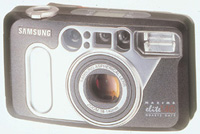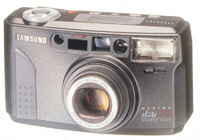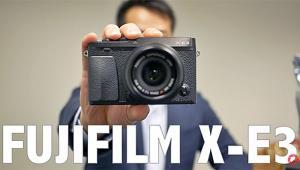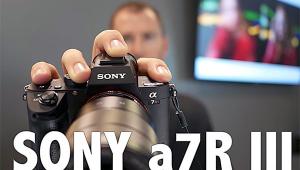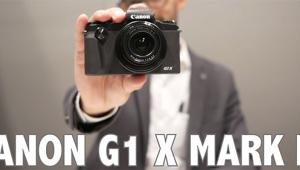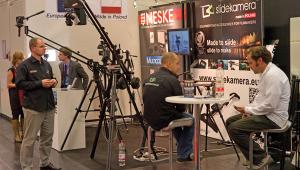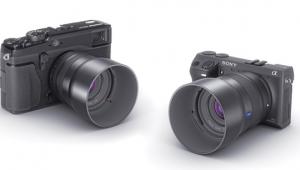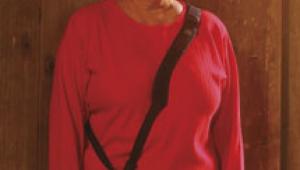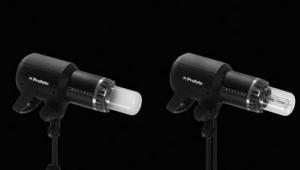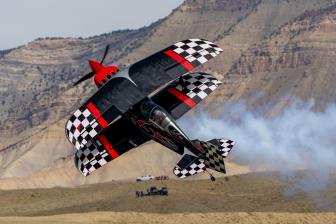35mm And APS Compact Cameras
Although digital cameras attracted the lion's share of attention at this year's PMA show, the compact lens/shutter cameras still outsell such models by a vast margin. Most manufacturers continue to offer both formats: 35mm and Advanced Photo System (APS or 24mm). The 35mm format has the advantage of a larger film size and lower film and processing cost, so many cameras of this type were introduced. However, APS offers its own set of benefits, such as Print Quality Information Ex-change (PQ ix), pre-selectable image formats and convenient Mid Roll Change (MRC) capability with some cameras. Although there were dozens of new compact cameras introduced at the PMA show, we decided to cover only those that might be of primary interest to Shutterbug readers. Status Of The APS Format The most popular of their current models is the Advantix Preview, discussed in my photokina report (December 2000). This camera has received a great deal of publicity because of the 1.8" preview screen LCD display on its back. After taking a picture, you can preview what the print will look like--in digital form--including the probable exposure. If you don't like what you see, simply re-shoot the picture. You can also press a button to tell the camera (and the photofinisher) that you want no prints of certain pictures or that you want more than one print of favorites on the roll. At a list price of $299 the Advantix Preview does sell for up to $100 more than comparable Advantix cameras without the digital image display. Even so, most everyone loves the image preview capability and Kodak is convinced that the concept will prove to be incredibly successful. In fact, they are already planning a second-generation model of a smaller size and a third-generation model that will also capture digital images. The latter is at least a year from introduction, but Kodak is not making a big secret of it. In fact, Stephen Malloy Desormeaux, Kodak's Product Manager of APS cameras, provided some specifics. That Advantix camera will have an image sensor and internal memory for a full roll of images, in addition to the usual APS film camera features. Image file size will be small, probably 640x320 pixels, but more than adequate for sending via e-mail or uploading to a web site. The rest of the Advantix line will continue, and Kodak has no plans to add the Preview or digital capabilities to a 35mm camera. New APS Cameras These are fairly basic cameras under the striking design, with a 23mm f/4.8 lens (equivalent to 29mm in the 35mm format), active autofocus with two focusing steps, built-in multimode flash plus some APS format advantages. These include date/time imprinting on the front or back of the print, title imprinting (with a choice of five options), and PQI or Print Quality Improvement data recording. Prices are moderate (under $200 list). These APS models should sell like hotcakes. The ELPH series--also APS--remains among the most popular of all Canon point-and-shoot cameras. Canon has expanded the line with a new model, the ELPH LT270 with 24-65mm aspherical zoom (equivalent to 30-81.3mm) with close focusing down to a mere 18". Aside from the usual capabilities and multimode flash, this model's viewfinder provides 20 percent more magnification than existing ELPHs, plus a wider angle of view for greater visibility. The list price is only $230, because it features a polycarbonate body, not stainless steel like the earlier ELPH 370Z. Olympus also introduced three new APS cameras, including one of the smallest of the autofocus models. In fact, the izoom 3000 is smaller than a business card (though thicker of course) but includes a 26-73mm zoom (26-73mm equivalent), multimode flash, metal front plate, close focusing to 24", zoom finder and more. Frankly, the sleek and slim i100AF (autofocus) and i10 (fixed focus) models look a lot more classy and include similar features, but a 24mm lens instead of a zoom. At list prices of $90 and $72, respectively, these two may become highly popular with teens and children who don't necessarily want a zoom lens. Prestige Value |
|
Exposure compensation is available as are other controls: seven custom functions and an aperture dial to select f/stops from f/2.8 to f/16 in Aperture Priority AE and manual focus. No distance scale is provided to aid manual focus, so allow the AF system to set focus first and then check the distance information in the LCD panel and change focus if desired. The wide, three point AF system is passive, thus great for low-light photography. Other amenities include multimode flash, rubber eyecup, and shutter speed data in the viewfinder. Speeds from 16 sec to 1/2000 sec are available in Program mode, but in the camera's LT mode, incredibly long (metered) speeds of up to 3 minutes can be selected. Two new Rollei cameras also feature an all-metal body, but will be far less pricey. The Prego 115 with 38-115mm Vario-Apogon HFT zoom and the Prego 30 with Apogon 30mm lens are handsome silver models with real-image finders. They offer active autofocus and a solid list of features including multimode flash. Made in Germany, these are but two of the many Rollei 35mm compact cameras--including the more affordable Giro line with Rolleinar single focal length or Rolleigon zoom lenses. |
|
Superior Viewfinders |
|
Longer Is Better The designers at Samsung apparently agree, and their new Maxima Elite 170QD reaches from 38mm to a full 170mm. If that's too long, their Elite 140QD with 38-140mm zoom may seem less daunting. Both include the usual set of capabilities plus extremely close focusing: about 3' at long focal lengths, useful for very tight close-up shots. The 170QD uses passive autofocus while the 140QD incorporates the more common active AF system. Olympus has sold over 18 million Stylus 35mm compact cameras since 1991, making this the best selling 35mm series in history. These sleek cameras continue to evolve, with the new all-weather Epic Zoom 170QD and Deluxe the latest incarnation. For the first time in a Stylus camera, the lens includes an element of Extra Low Disper-sion glass to correct chromatic aberration at the longer lengths of its 38-170mm f/4.8-13 zoom lens. It also incorporates a glass aspherical element plus a hybrid aspherical element for higher image quality at short focal lengths. More importantly perhaps, the Epic Zoom 170 models employ a dual autofocus system, with both active and passive AF systems, plus two focus assist lights and multi-point AF sensor. This combination should prove to be able to focus on most any type of subject, regardless of distance. Aside from the many camera capabilities, there's a unique feature with the Deluxe model only. The Visual Confir-mation Finder momentarily darkens to alert the user that a picture has been taken. Mid roll panorama format switch (Deluxe only) plus a diopter correction eyepiece are extra amenities. The new Yashica Zoomate 150EF also features a long focal length in its 38-150mm zoom lens. Although it has built-in flash, it also accepts external flash. The optional Super Flash delivers extra power and better redeye control due to the greater distance from the lens. With its many features, including the Super Flash, this camera is a bargain with a list price of only $270. Vivitar's new PZ3155 stretches an extra 5mm, with its 38-155mm zoom; this camera includes the usual complement of features including active AF, plus panorama frame mode. |
|
True Water Resistance Better yet, the 95WR is a high tech camera with many great capabilities including passive autofocus with five focus detection sensors, full information LCD panel, a panorama mode, zooming finder, multimode zoom flash and more. Its 38-95mm zoom is well sealed, too, of course. It's a bit bulky compared to sleek cameras like the new Pentax IQ Zoom 135M with 38-135mm zoom and similar capabilities, but the extra size is a small tradeoff for peace of mind. It's likely to be the camera of choice for marine sports and ecoutourism. |
|
Slimmer Is Better Unusual Cameras Otherwise, this is a typical automatic, autofocus camera with a 38-115mm zoom lens and flash with seven modes. At the high magnification "macro" settings--especially at f/44--the shutter speeds will be very long, even with ISO 800 film. The use of (built-in) flash may help to prevent image blur from camera shake but use a tripod whenever possible if planning to shoot extreme close-ups. Remember the Argus C-3--"the brick"--that was introduced in 1938? Now a collectible item, it was the first compact camera and incredibly rugged. Well, Argus is still around, marketing many cameras, but their three new retro models--R10, R20, and R40D--are the most interesting. The bodies are metal coated, then hand brushed and polished giving them an antique look. A metal "face" is also standard. Full specifications were not yet available, but these are autofocus models with full automation, extra large viewfinder, and flash. The Future Of Compact Cameras No doubt this is just a starting point and we can expect more sophisticated 35mm/digital cameras from several manufacturers. I suspect that Kodak will eventually follow suit, too, making both 35mm and APS hybrid models. And how long will it be before this concept makes its way into SLR cameras? Most manufacturers are silent about their R&D plans, but you don't need a crystal ball to see it all coming. Developments such as this will certainly keep cameras interesting and give us the best of both worlds. |
- Log in or register to post comments

